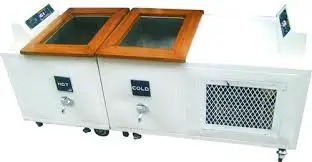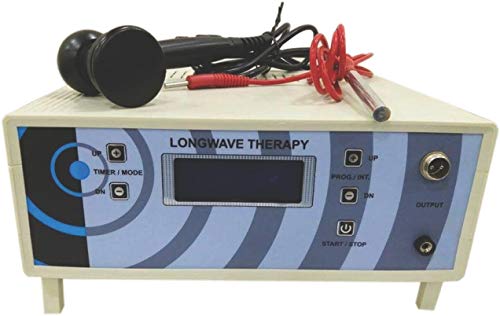Iontophorosis: Indication, Contraindication, Precaution
Table of Contents
Introduction:
~the term iontophoresis is simply defined as ion transfer(ionto=ion),(phoresis=transfer)
~introduction of ions into the body using direct electrical current.
~it is a specialized technique of electrical stimulation that uses electrical polarity of continuous direct current to ionize medicines placed beneath surface electrodes and transfers them into the body through the skin.
Basic principle of Iontophorosis:
~current required
~ionic polarity
~low-level amplitude
~electrode size

Current required:
~in order to ‘drive’ the ions into the tissues ,a direct (galvanic) current needs to be employed.
~a monophasic pulsed application can also be used.
~constant current is preferable to constant voltage thus,the magnitude of the applied current will not exceed the preset level in terms of skin resistance.
Ionic Polarity:-
~the basis of successful ion transfer lies in physcics principle like poles repel and unlike poles attract.
~ions with a polarity which is the same as that of the stimulating electrode are repelled into the skin.
~the electrode under which the ionic soltion is placed is called the active electrode.
~the other electrode,which is the complete the circuit is most commonly called the DISPERSIVE,INDIFFERENT,INACTIVE or RETURN electrode.
Low -level Amplitude:-
~low level amplitude is more effective.
~the treatment is usually applied with currents upto 5 mA.
~with low ionic concentrations -up to 5%.
~treatment times are typically in the 10-30 minute range.
Electrode size:-
~the negative electrode should be made larger than the positive electrode(usually twice).
~enlarging the negative electrode size lowers the current density on the negative pad,leading to reduction of irritation.
Physiological changes:
~ion penetration
~acid/alkaline reactions
~hyperemia
~dissociation
Ionic penetration:-
~penetration does not exceed 1mm.
~subsequent deeper absorption through the capillary circulation.
~the bulk of deposited ion at the active electrode are stored,to be depleted by the sweep of circulating blood.
Acid/alkaline reaction:-
~will get ACID accumulation under the POSITIVE (anode)electrode (weak HCL).
~this is because negatively charged chloride ions (CL- from NACL)is attracted towards the anode.
~this is considered sclerotic,which tends to harden tissues,serving as an analgesic agent due to local release of oxygen.
*will get alkaline accumulation under the negative NEGATIVE(cathode)electrode.
~because the positively charged sodium ions (NA + from NACL)will move towards the cathode.
~the NA+ ions react with water to form sodium hydroxide(NAOH).
~considered sclerolytic,which is a softening agent due to the hydrogen release,serving in the management of scars and burns.
*Hyperemia:-
~both the positive and negative electrodes produce hyperemia and heat due to the resulting vasodilatation.
~the cathodal hyperemia is generally more pronounced and takes more time to disappear than that of the anode.
~generally,hyperemia under both electrodes,does not last than more hour.
Disscoation:-
~ionizable substances dissociate in solution releasing ions.
~with the passage of direct current into the solution migrate toward the other pole.
~gets absorbed through the capillary circulation.
~this is an concept of ion transfer.
Complications:
~chemical burns
~heat burns
~sensitivities and allergic reactions to ions.
Chemical burns:
~this is due to excessive formation of strong sodium hydroxide at the cathode.
~the skin becomes pinkish initially,to be grayish and oozing wound few hours later.
~this burns take long time to heel.
~should be treated with antibiotics and sterile dressings.
~burns under the anode are rare,
~appears as a hardened red area similar to a scab.
Heat burns:
~occurs due to excessive heat build up in areas with high resistance.
~most of this burns occur when,
~the electrode are not moist enough
~they are not fitting well or,
~not in good contact with the skin.
~should be treated with the antibiotics and sterile dressings.
Allergic reactions to ions:
~if the patient is allergic to seafood,”iodine”should not be used.
~patients with an active peptic ulcer or gastritis,react poorly to ‘hydrocortisone’.
~patients,who have problems with aspirin,reacts poorly with salisylates.
~patients sensitive to metals may react to copper,zinc or magnesium.
Indications of Iontophorosis:
- Calcific tendonitis
- myositis ossificans
- local anesthesia
- inflammatory conditions
- relief of Joint and Muscle pain
- To reduce swelling and edema
- skin conditions
- adhesive capsulitis (Frozen shoulder)
- bursitis
- tendosynovitis
- tension headache
- inhibition of spasticity
- Reduce calcification in the body
- To manage scar tissue
- to relieve local edema
- Pilocarpine iontophoresis is also used to stimulate sweat secretion, as part of cystic fibrosis diagnosis.
Contraindications of Iontophorosis:
~open wounds or burns
~patients with cardiac pacemakers
~allergy to medication
~loss of sensation
~greasy or dirty skin
~sole of foot(hard for the ions to pass inside)
Precautions:
~don’t use two chemicals under the same electrode,even if they are from the same polarity.
~don’t administer ions with opposite polarities during the same treatment session.
Current Density:
~the current density measured in mA/cm2.
~if the current density reaches too high a level,tissue damage,especially skin burn,may ensue.
~it is suggested that a maximum safe current density of,
~o.5 mA/cm2 is applicable at the negative(cathode) and
~1.0 mA/cm2 at the positive(anodal)electrode.
Current Intensity:
~calculated as:-
~maximum current(mA)=maximum safe current density(mA/cm2) X electrode area(cm2)
~recommended current intensity is 3 to 5 mA.
Treatment time:
~treatment time:-ranges between 10-20 min.
~patient should be comfortable with no reported or visible signs of pain or burning.
~check skin every 3-5 minutes for signs of skin irritation.
Formula for iontophorosis:
~I x T x ECE =grams of substance introduced
~where:-
~I-(intensity)=measured in amperes.
~T(time)=measured in hours.
~ECE(electro chemical equivalent)represents standardized figures for ionic transfer with known currents and time factors.
~as the determination of the ECE for many complex substances is very difficult ,fewer milligrams of these complex substances will penetrate the skin.

Electrodes:
~Traditional electrodes
~Commercial electrodes
Traditional electrodes:-
~older electrodes made of tin,copper,lead,aluminum,or platinum backed by rubber.
~completely covered by sponge,towel,gauze which contacts skin.
~absorbent material is soaked with ionized solution.(medication)
~if medicated ointment is used,it should be rubberd into the skin and covered by some absorbent material.
Commercial electrodes:-
~sold with most iontophoresis systems.
~electrodes have a small chamber covered by a semipermeable membrane into which ionized solution may be injected.
~the electrodes self adheres to the skin.
Electrode preparation:-
~attach self-adhering active electrode to skin.
~ inject ionized solution into the chamber.
~attach self-adhering inactive to the skin and attach lead wires from the generator.

Application:-

~the skin should be abrasion/cut free and
~the area carefully washed (soap and water is fine)

~dry electrodes are inappropriate and should not be used.
~if pregelled electrodes are being used,ensure that a good even contact is achieved.

~adequate fixation of the electrode and pad to the skin needs to be carefully maintained.
~uneven current distribution can easily lead to skin burns or irritation.
~explain to the patient what is expected and ensure that they know to report immediately if any untoward or painful sensation are felt.
~turn the current up slowly to the required amount.
~at the end of the treatment time,ensure that the current is turned down slowly






4 Comments